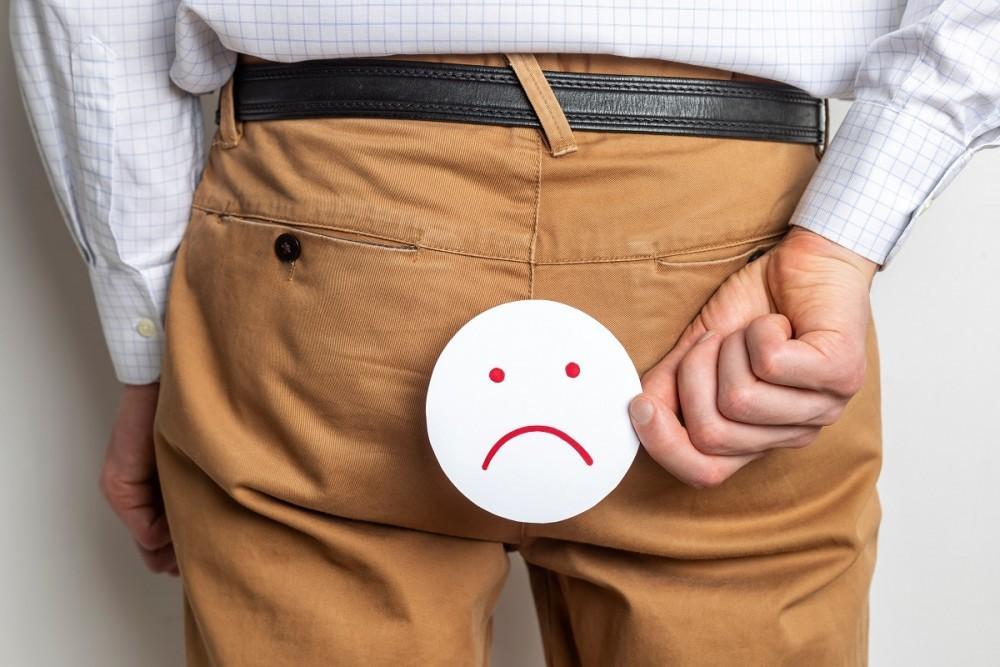Back
Why Do I Have Pain in my Butt Hole?
By Shannon Strauch, PTA, STMT-1 on 3/5/2024

Experiencing pain in the butt hole can be distressing and impact your quality of life, but pelvic floor therapy can often be helpful in addressing such issues. Pelvic floor therapy focuses on the muscles, ligaments, and connective tissues in the pelvic region, including those surrounding the anus.
A few reasons for pain in the anus include:
Hemorrhoids:
These are swollen blood vessels in the rectal area that can cause discomfort, itching, and bleeding. They are quite common and can be triggered by factors such as straining during bowel movements, sitting for long periods, or pregnancy.Anal fissures:
These are small tears in the lining of the anus, often caused by passing hard or large stools. They can result in sharp pain during bowel movements and may cause bleeding.Levator ani syndrome:
Levator ani syndrome is a spasm of those muscles causing symptoms of tailbone pain, ball in rectum feeling, and/or feelings of UTI. Levator ani syndrome can be caused by:Orthopedic conditions: such as hip trauma, lower back issues, fall on tailbone, and/or surgery in and around the area, causing them to spasm.
Stress: the levator ani (and the pelvic floor as a whole) responds to the fight or flight response of your autonomic nervous system, leading to chronic holding of your muscles, thus causing spasm and pain.
Sexual/physical trauma: past or recent sexual and physical trauma can cause unconscious tightening of the pelvic floor muscles.
Chronic inflammation: conditions such as chronic constipation, IBS, Crohn's disease, chronic UTI or yeast infections can eventually irritate the surrounding tissue, which can trickle down to the levator ani muscles.
Infections:
Infections in the anal area, such as anal abscesses or sexually transmitted infections, can lead to pain, swelling, and discomfort.Inflammatory bowel disease (IBD):
Conditions like Crohn's disease or ulcerative colitis can cause inflammation and pain in the rectum and anus.Anal fistula:
This is an abnormal connection between the anal canal and the skin near the anus, often resulting from an infection or abscess. It can cause pain, swelling, and drainage of pus.Proctitis:
Inflammation of the lining of the rectum, which can be caused by various factors including infections, inflammatory bowel disease, or radiation therapy.Proctalgia fugax:
is a medical condition characterized by sudden, severe rectal pain that typically lasts for a few seconds to minutes and then resolves spontaneously. The pain is often described as sharp, stabbing, or cramp-like and usually occurs without warning, often waking individuals from sleep.Muscle spasms:
Sometimes, muscles around the anus can spasm, causing pain and discomfort. This can be related to conditions like pelvic floor dysfunction or nerve issues.Pudendal Neuralgia or Sciatica:
Pudendal Neuralgia is a long-term pelvic pain syndrome that originates from damage or irritation of the pudendal nerve, the main nerve of the pelvis. Sciatica refers to pain that radiates along the path of the sciatic nerve, which is the longest nerve in the body. It runs from the lower back, through the buttocks, and down the back of each leg.
Here's how pelvic floor therapy may help with pain in the anal area:
Muscle relaxation:
Pelvic floor therapists can teach relaxation techniques to help reduce tension and spasms in the pelvic floor muscles, which may contribute to anal pain. Learning to relax these muscles can alleviate discomfort and improve overall pelvic function.Strengthening exercises:
In some cases, weak pelvic floor muscles can contribute to issues such as anal pain or incontinence. Pelvic floor therapy may include exercises to strengthen these muscles, which can help support the pelvic organs and reduce symptoms.Biofeedback:
Pelvic floor therapists may use biofeedback techniques to help you gain awareness and control over your pelvic floor muscles. Biofeedback involves using sensors to monitor muscle activity and providing visual or auditory feedback, allowing you to learn how to properly engage or relax these muscles.Manual therapy:
Hands-on techniques, such as massage or myofascial release, may be used by pelvic floor therapists to address muscle tightness, trigger points, or scar tissue in the pelvic area, which can contribute to pain and dysfunction.Education and lifestyle modifications:
Pelvic floor therapists can provide education on proper bowel habits, posture, and other lifestyle factors that may affect pelvic floor function and contribute to anal pain. Making adjustments in these areas can help alleviate symptoms and promote pelvic health.Behavioral strategies:
Therapists may work with you to identify and modify behaviors or habits that could exacerbate anal pain, such as straining during bowel movements or prolonged sitting. Making changes in these areas can help reduce stress on the pelvic floor and alleviate discomfort.
It's important to note that pelvic floor therapy is individualized and may involve a combination of techniques tailored to your specific needs and symptoms. If you're experiencing pain in your anal area, consider consulting with a pelvic floor therapist or a healthcare provider who can assess your condition and recommend appropriate treatment options, which may include pelvic floor therapy as part of a comprehensive plan for managing your symptoms and improving your pelvic health.
Read More:
Dry Needling for C-Section Scars and Postpartum Recovery By Dr. Christine Martirez PT, DPT on 10/15/2024 Learn how dry needling can be used for c-section scars and c-section recovery How Red Light Therapy Can Be Used to Treat Pelvic Floor Dysfunctions By Dr. Christine Martirez PT, DPT on 10/15/2024 Learn about red light therapy and how it can be used to treat pelvic floor dysfunctions
Are you ready to live pain free?
Request An Appointment